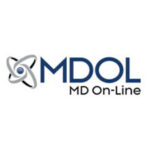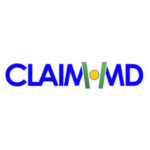As a transformative virtual care program, Remote Therapeutic Monitoring (RTM) complements Remote Patient Monitoring (RPM) to help realize significantly better patient outcomes. RTM uses non-physiological therapeutic data such as pain levels, adherence to medications, and alignment to therapy to manage and control chronic conditions. Remote Therapeutic Monitoring devices automatically record and report health data to the care team for more effective care strategies and delivery.
Development of RTM Codes
In 2018, the Centers for Medicare and Medicare Services (CMS) released the new RPM codes to track the status of patients outside the clinic or hospital setting. CMS went on to make major changes to RPM and other remote services in the 2021 Medicare physician fee schedule final rule. The 2022 Physician Fee Schedule final rule on the new RTM codes expanded Medicare reimbursement beyond the existing RPM codes to the RTM area. Six primary Medicare RTM CPT codes were introduced: 98975, 98976, 98977, 98980, and 98981.
On November 1, 2022, the CMS released the 2023 final rule. While some changes to the existing CPT codes for RTM services were finalized, the CMS backed away from confirming the replacement of these RTM codes with four new, specific HCPCS G-codes for RTM services. CMS did, however, leave the door open for providing the existing CPT codes for RTM services under general supervision, as opposed to direct supervision.
General vs. Direct Supervision
However, questions related to general vs. direct supervision in the RTM rules remained.
By placing RTM codes in the Medicine section instead of the E/M services section of the CPT Manual, CMS concluded that RTM codes could not be designated as care management services that permit time spent by clinical staff to be billed incident to a practitioners services under general supervision. Instead, billing practitioners would need to exercise direct supervision over clinical staff by being there in the same physical location.
In general supervision, the billing practitioner can order and bill the service while remote clinical staff perform the work under their general supervision. On the other hand, in the case of direct supervision, services must be rendered directly by the billing practitioner or under their direct supervision.
The direct supervision requirement set RTM apart from other remote monitoring and care management services like Remote Physiologic Monitoring (RPM) and Chronic Care Management (CCM), leading to concerns about potentially limiting adoption and reducing patients access to RTM.
In the 2023 final rule, the CMS did not address the matter that general supervision is not permissible for non-E/M services codes. It added that while this change will help Medicare practitioners eligible to bill incident to, it may not replace the current exclusion for services provided incident to a therapist.
More Changes Needed
Until the question of general vs. direct supervision is satisfactorily resolved, which should take place sooner rather than later, RTM is unlikely to reach its full transformative potential.
Clearly, remote monitoring (both RTM and RPM) services have received a boost in the last few years. Utilization of RPM services has been rising and RTM services should experience a similar increase. With the Final Rule, CMS is seeking to reduce coding and billing complexity for RTM services while raising care delivery flexibility and promoting beneficiary access to RTM services. However, it remains to be seen if CMS will be able to accomplish these goals currently due to the limited nature and continuing confusion when it comes to proper billing and supervision of RTM services.
This is a space that needs to be closely watched as RTM and RPM services should continue to gain ground as CMS coverage and payment policies align with patient and provider needs.


















